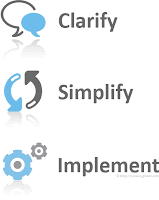So I woke up this morning and figured, "what the heck?" Why not give this a try with Q#48 and see where it leads:
We've seen a raise and then a re-raise from two TAgs. The action is to us and we've been bet into. So we choose the YES path in the flowchart. This leads us to:
This one is a little tricky, and it depends entirely on the range we assign our opponents. Heads-up against TAg #1's range, we're ahead. But against the heads-up 3bet range we assigned TAg#2, our equity is only 45% to his 55%. And against both players, our equity is just 30%. So, by definition, our hand is not likely the best. In our email exchange, my friend actually assigned the range of TT-QQ to TAg#2, and against this range, our AK is crushed even further at just 28% to the villain's 72%. Therefore we take the NO fork in the road. This leads to:
Again, if our equity is 30% against the assigned ranges, but we're getting 33% to call (assuming we don't get reraised by TAg#1), the math says we're not even break-even by calling. The situation is worse if we assign my friend's TT-QQ range. Therefore the correct path to take here is again NO. This leads us to:
I believe the answer here is also clearly no. Why? Well, it goes back to the ranges we put on our opponents. For example, if TAg#2 has 99-QQ and an Ace or King hits on the flop, he's not going to pay us off. If he has AA or KK, we're in an RIO situation. If he has AQ we will get paid off only if an Ace hits, but not if a King hits. If he has AK, we're chopping. In other words, we have essentially no implied odds against this guy. The same type of analysis can be applied to TAg#1. Therefore we have to take the NO path again, which leads us to:
Against TAg#1, you might argue that you have decent fold equity, but there are two opponents involved. I.e., we still have to get past TAg#2. Given his range and the fact that he knows we'll be OOP in the hand, we're probably only getting him to fold out a small part of his range, and in fact it will be those hands that we don't want him to fold. The rest of his range (that's currently beating us) he's either calling or 5betting with. Therefore we take the NO path one again, which leads to:
Quod erat demonstrandum.
All-in for now...
-Bug








Thanks a lot for publishing the new good stuff for us. I’ll really get the great advantage from your good stuff.
ReplyDeletepoker online